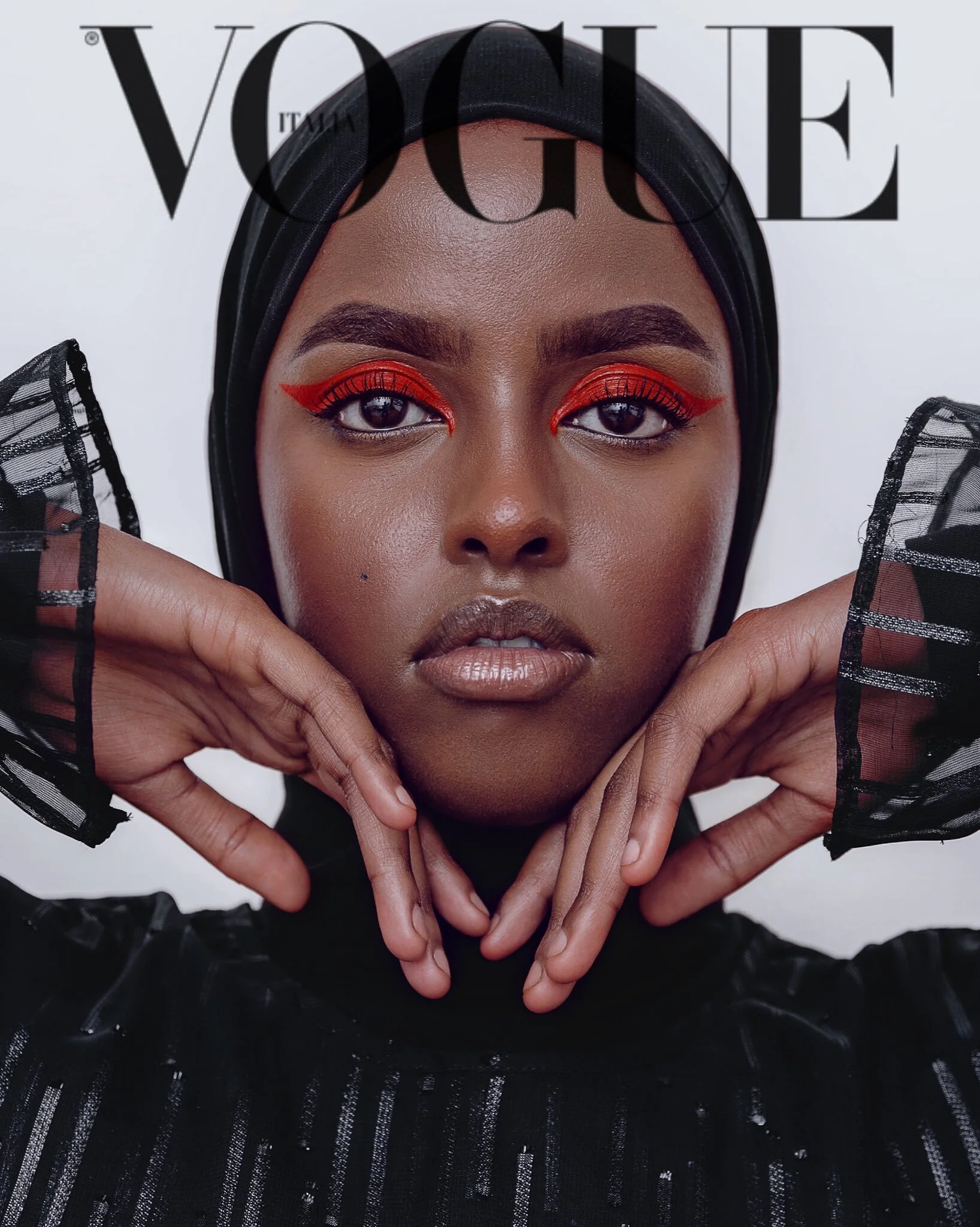#VogueChallenge: Going Beyond the Social Media Bandwagon
by Anmol Irfan
Following the murder of George Floyd, the Black Lives Matter movement has taken hold of us. Its reach has gone far beyond the US, and has inspired the taking down of statues, global protests and crowdfunding.
Amongst all this, fashion magazine and global icon Vogue has been accused of mistreating employees of colour, and upholding discriminatory employment policies and workspace ethics under editor-in-chief, Anna Wintour.
In an effort to speak out against racism, and reclaim platforms that refuse to represent Black people, Salma Noor created the #VogueChallenge. Amid media coverage of the Black Lives Matter protests, Noor posted an image of herself photoshopped onto a Vogue cover, with the words ‘Being black is not a crime’.
Since then, similar images of photoshopped Vogue covers featuring people of colour have surged across a variety of social media platforms. The stunning images highlight the kind of diversity and representation that Vogue has been missing out on for all these years.
It took American Vogue more than 80 years to feature its first black cover star, Beverly Johnson. It was also merely two years ago that they hired their first African American photographer Tyler Johnson, who was behind Beyonce’s September 2018 cover.
Vogue’s senior news fashion editor, Janelle Akwodu, recently stated the importance of the #VogueChallenge within the BLM movement:
"Few women, people of colour, and non-binary individuals have ever been granted those opportunities […] the photographers behind the majority of magazine covers are white and male," Akwodu acknowledged.
The #VogueChallenge disrupts the narrative that you have to look a certain way to be able to represent the fashion and beauty industry. The popularity of the challenge, and the conversations it has started, shows us how easy it is to create space for diversity. In doing so, it counters all the excuses we have been fed over time by institutions and systems that refuse to accommodate black people.
Through the #VogueChallenge, we are shown the possibility of a world that does not impose its racist beauty standards on us, allowing people of all communities and backgrounds to be the forerunners of their own movements. At its heart, the challenge provides a space to a community whose right to that space has historically been taken away, and still continues to be limited by those in power.
But, as the challenge grew in popularity, it began to feel like influencers were missing the point. I’ve seen some particularly creative takes from local influencers and bloggers here in Pakistan, and while I wanted to applaud them for their creativity, it felt like something was wrong.
Salma Noor has clarified that the challenge isn’t only for black models, but it’s still important that those participating understand that the #VogueChallenge was created to amplify the BLM movement.
While social media is an important tool to mobilise people to take part in social justice movements, the ease with which people can appropriate its trends means that campaigns are sometimes at risk of losing all meaning. Users need to realise that such campaigns go beyond the ‘trending’ list, and be mindful of interacting with them in the way they are intended.
Far too many people who created their own #VogueChallenge, failed to recognise the meaning behind it, or what it represented - using the post instead to focus solely on themselves. I’m not contesting anyone’s right to post images of themselves on their platforms, but I do believe that a complete ignorance of the symbolism behind the trend risks overpowering voices that need to be represented (I refuse to use terms ‘unheard voices’ in this context because we need to acknowledge the active nature of oppression in overpowering or shutting down voices within the black community and other marginalised groups).
One post that really stood out was by Pakistani model Sarah Zulfiqar, who became conscious of her role in the challenge. After realising what it meant, she edited the caption on her Instagram post to apologise for her actions, saying:
“It is not my intention AT ALL to speak over black voices and I completely agree that the lack of representation of black POC in fashion and how black photographers and models and creatives are just ignored is terrible and outright racist.”
The trivialisation of the #VogueChallenge points to a much deeper problem. Non-black people of colour often think that their experiences can be put under the same umbrella as those of black communities. While the discrimination and racism faced by other communities is equally important to target, putting all of them in the same boat seeks to generalise these issues to a point that may prevent change from taking place.
South Asians and other communities of colour need to realise that having faced racism or discriminatory experiences does not make it okay to force their narratives into someone else’s story or speak over them.
Creators are meant to have fun with the #VogueChallenge, but history has taught us well that social justice causes need more than just the attention of a moment. If we jump on social media bandwagons without also taking action to support those who experience injustice, then the real cause will soon disappear into the blackhole of fads long gone.
Title image by Salma Noor, the creator of the #VogueChallenge.
Anmol Irfan writes for Perspective Magazine. You can also read her work on The London Globalist.





